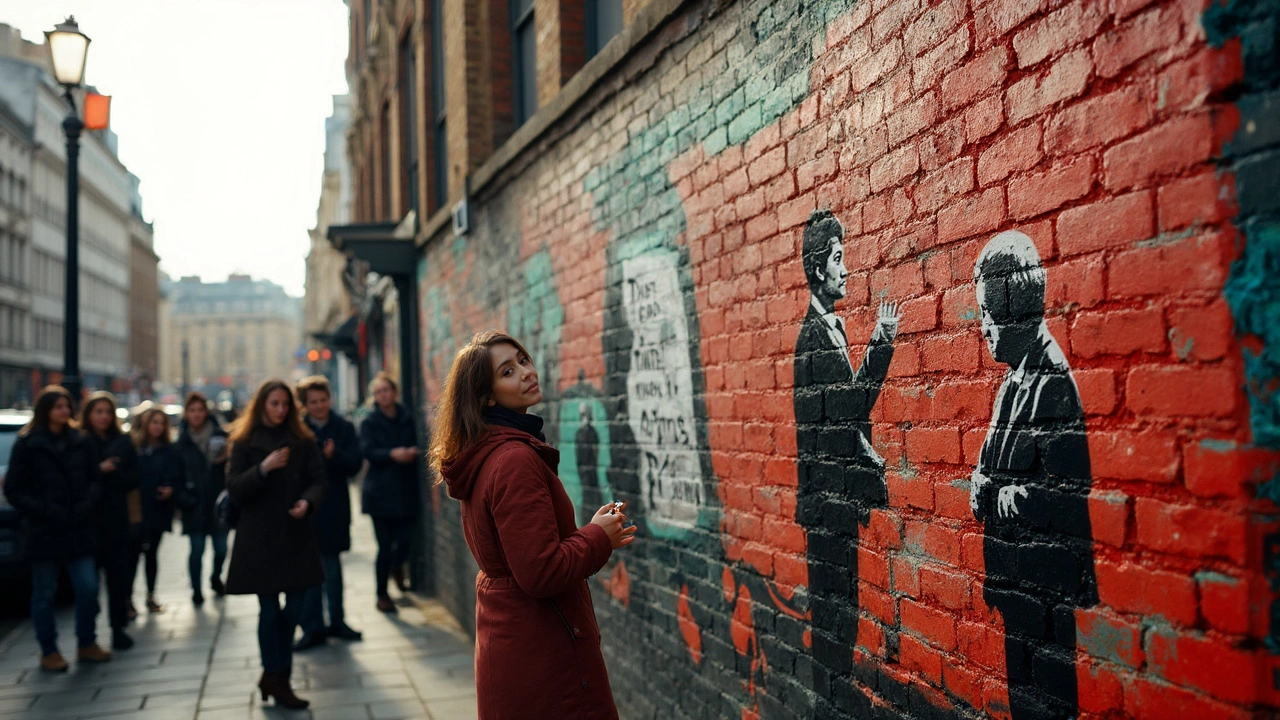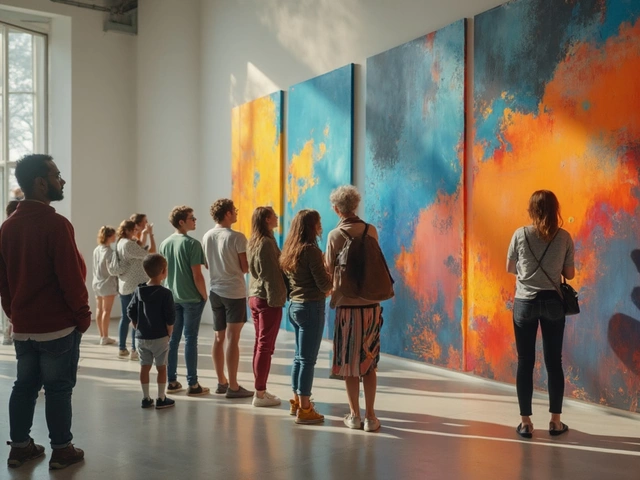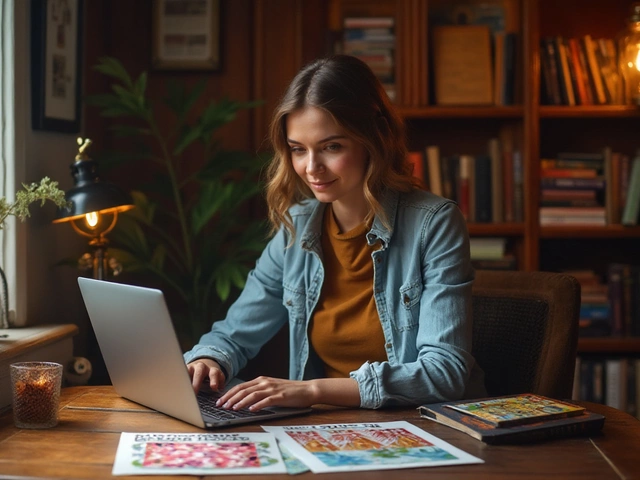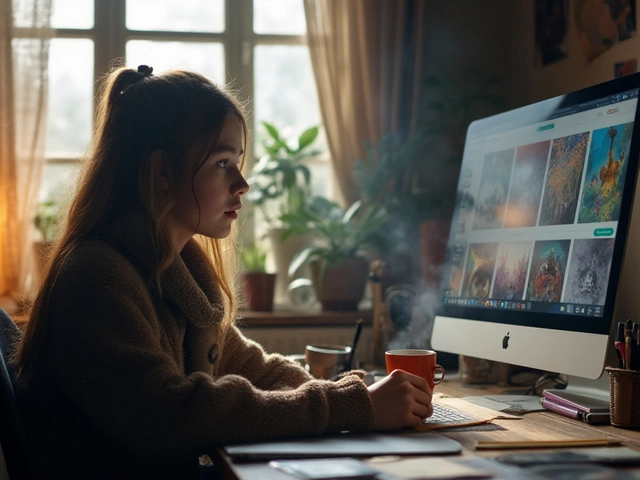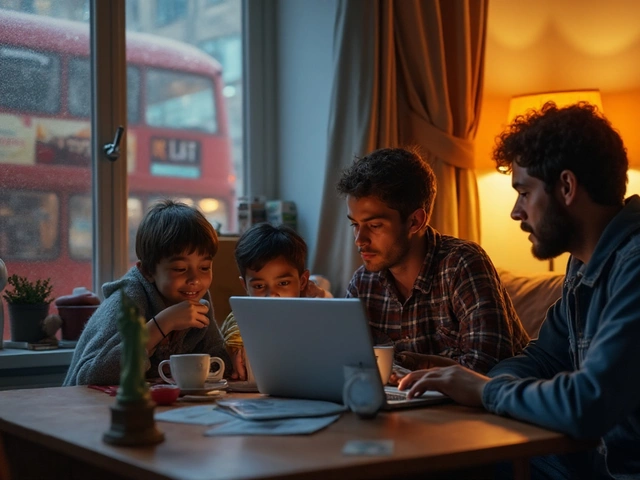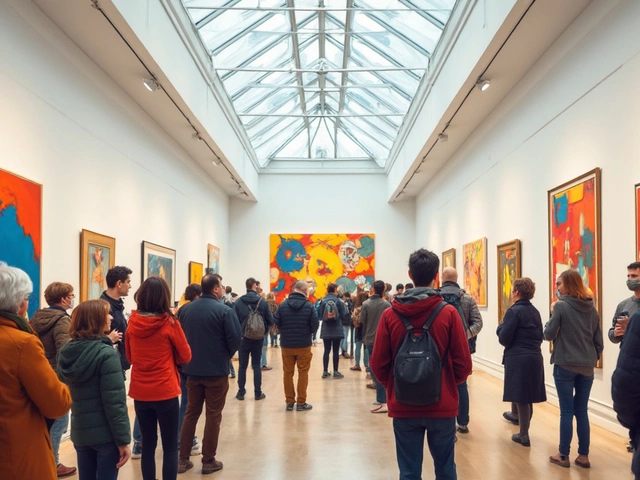Contemporary art doesn’t always look like what you see in fancy museums. Sometimes, it pops up on a street corner or a crumbling wall. Think of Banksy: he’s a mystery, but almost everybody has seen his work on social media or in the news. His graffiti has caused whole crowds to stop and think, or even laugh, right in the middle of their day. That’s the thing about today’s art—it refuses to stay in a neat box.
If you want to get a feel for how modern artists shake things up, Banksy is a perfect place to start. His pieces might look simple at first glance, but there’s always a twist. He uses spray paint and stencils—nothing fancy. But suddenly, you’ve got a picture of a girl with a balloon or a rat holding a sign, and you’re wondering what it really means. This is exactly what makes contemporary art powerful: it gets under your skin and makes you think twice about everyday life.
- What is Contemporary Art?
- Why Banksy Stands Out
- Banksy's Most Famous Works
- Why People Care About Street Art
- How to Spot Real Contemporary Art
What is Contemporary Art?
Contemporary art is basically the art that’s happening right now, or at least, was created from the late 20th century up to today. Unlike old school paintings of kings or classic sculptures, contemporary art usually deals with topics like politics, society, the environment, or just plain weird stuff that makes people stop and think. There isn’t a fixed style—one artist might splash paint around, while another uses video, sound, or even just a pile of random objects. If you hear someone say, “That’s art?”—it’s probably contemporary.
Here’s what makes this type of art different from what came before:
- It’s not limited to paint or clay. Artists use anything: trash, neon lights, or even social media posts.
- It often asks questions rather than giving answers. Sometimes you even become part of the art just by interacting with it.
- Contemporary artists care less about showing off technical skill and more about sharing ideas, emotions, or statements about the world.
Another big thing: contemporary art often appears outside of museums and galleries. Buildings, sidewalks, and even farmland have all been turned into places to see art. This makes it way more accessible. Basically, if it challenges the way you see things or starts a conversation, you’re probably looking at contemporary art.
Why Banksy Stands Out
So, what makes Banksy different from just any graffiti artist? For starters, nobody really knows who he is. Seriously—he's kept his identity a secret for more than two decades. This mystery isn't just a gimmick; it turns every one of his new pieces into a city-wide scavenger hunt. The hype is real. As soon as someone finds his latest work, people rush to see or post about it. This not only makes his art buzzworthy but also keeps it outside the usual snobby art circles.
Another reason Banksy grabs attention is his way of talking about real-world issues. He uses simple images to make big statements about politics, war, greed, or even just plain old boredom with everyday life. His 2005 artwork on Israel’s West Bank wall made world headlines, and his 2018 painting "Girl With Balloon" shredded itself at auction after it sold for $1.4 million. It was the talk of social media, and suddenly everyone was debating what art was really worth.
- He’s self-taught—no fancy art school involved.
- Banksy's pieces often pop up overnight, so there’s real excitement in spotting one fresh.
- His art is illegal, but cities sometimes protect it with glass and security cameras. Wild, right?
- He tackles big topics—like poverty, war, and consumer culture—in really bold, simple images.
Check out this quick comparison of Banksy's style versus traditional contemporary artists:
| Feature | Banksy | Traditional Contemporary Artist |
|---|---|---|
| Media | Spray paint, stencils, public walls | Canvas, sculpture, installations |
| Venue | City streets, public spaces | Galleries, museums |
| Audience | Everyone—random passersby, not just art fans | Art lovers, collectors |
| Message Style | Blunt, satirical, sometimes playful | Often subtle, open to slow interpretation |
| Anonymity | Completely anonymous | Public persona, exhibitions |
For anyone trying to really understand contemporary art, Banksy is a wake-up call. He's proof that art in 2025 is about making people stop, stare, and talk—even if they never step inside a gallery.
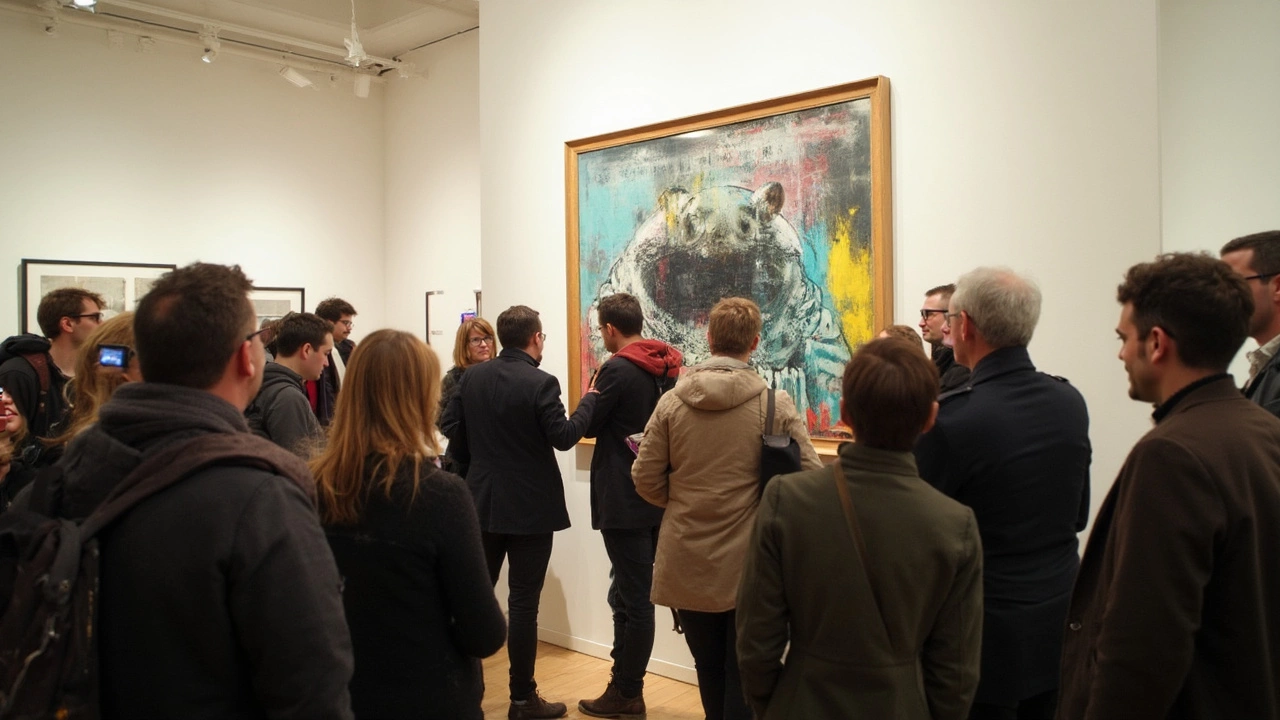
Banksy's Most Famous Works
If you hear people talking about contemporary art, chances are Banksy comes up fast. The guy is everywhere—sometimes overnight. He’s known for turning plain city walls into spots everyone wants to snap a photo of. Let’s look at some of his most famous work, why people buzz about them, and what makes each piece special.
- Girl with Balloon: Probably the most iconic Banksy image ever. A little girl reaches for (or lets go of) a heart-shaped balloon. It showed up first in London, 2002. The painting got even more famous in 2018 when it was partly shredded right after being auctioned for over £1 million.
- Love is in the Bin: This is actually just Girl with Balloon—but after Banksy’s prank. After someone bought it, a hidden shredder inside the frame turned half the canvas into strips. Instant new artwork, even more buzz.
- There Is Always Hope: You’ll see this one across memes and posters. It’s a part of the Girl with Balloon piece, with the words usually stenciled nearby.
- Kissing Coppers: Two British police officers, caught sharing a kiss on the side of a Brighton pub in 2004. It was playful, surprising, and definitely got people talking about stereotypes.
- Devolved Parliament: A huge painting from 2009 showing chimpanzees debating in the House of Commons. Not subtle at all, but people loved the bold message.
The crazy part? Banksy’s works have fetched millions at auction. According to a BBC report, the shredded Girl with Balloon—now titled "Love is in the Bin"—sold for £18.6 million in 2021. Here’s a quick peek at just a few numbers:
| Artwork | Original Location | Year | Auction Price |
|---|---|---|---|
| Girl with Balloon/Love is in the Bin | London | 2002/2018 | £18.6 million |
| Kissing Coppers | Brighton | 2004 | $575,000 |
| Devolved Parliament | Bristol Museum | 2009 | £9.9 million |
Why do these pieces matter to so many? Banksy turns each spot into more than just art; it’s a spark for debate. The Guardian wrote,
"His art isn’t just on the wall—it’s in the headlines, in the courts, and in everyone’s pockets on their phones."
If you want to see his work, some originals are in private hands, but loads of spots in London and Bristol still have Banksy’s touch. Apps and maps online help fans track the real stuff from copycats. Keep an eye out—new Banksys turn up when you least expect them.
Why People Care About Street Art
There’s something about street art that makes people stop and pay attention. Maybe it’s because the art shows up where you least expect it—on brick walls, alleyways, or even traffic signs. For a lot of folks, it feels raw and honest. Big museums can seem intimidating or out of reach, but a painted wall is right there for everyone. It takes art out of its comfort zone and puts it in everyday life where anyone can see it for free.
Street art often isn’t just about looking cool; it’s about sending a message. Artists like Banksy use simple images to talk about tough issues—war, politics, or just the craziness of day-to-day living. These works can create big conversations. For example, when Banksy painted “Girl with Balloon,” some people saw hope, others saw loss, but everyone had an opinion.
"Art should comfort the disturbed and disturb the comfortable." – Banksy
You can’t ignore the numbers, either. A 2023 survey by the Art Institute of Chicago found that 67% of people ages 18-35 prefer viewing art in public spaces over galleries. Cities with popular murals have seen more foot traffic and even an economic boost in their neighborhoods.
| City | Increase in Visitors After Major Street Art Installation |
|---|---|
| Bristol | +21% |
| Melbourne | +14% |
| Berlin | +18% |
Street art can also break barriers. There’s no entry fee, no dress code—just show up and look. Anyone can snap a photo, share it online, or talk about it with friends. Thanks to social media, a mural from a forgotten neighborhood can go viral and get people around the world talking about issues they never thought about before. That’s a big part of why contemporary art like this matters so much today.
If you want to experience street art, just start walking your local neighborhood. Look for legal walls, train stations, and even the backs of restaurants—you might find something that changes how you see your city.
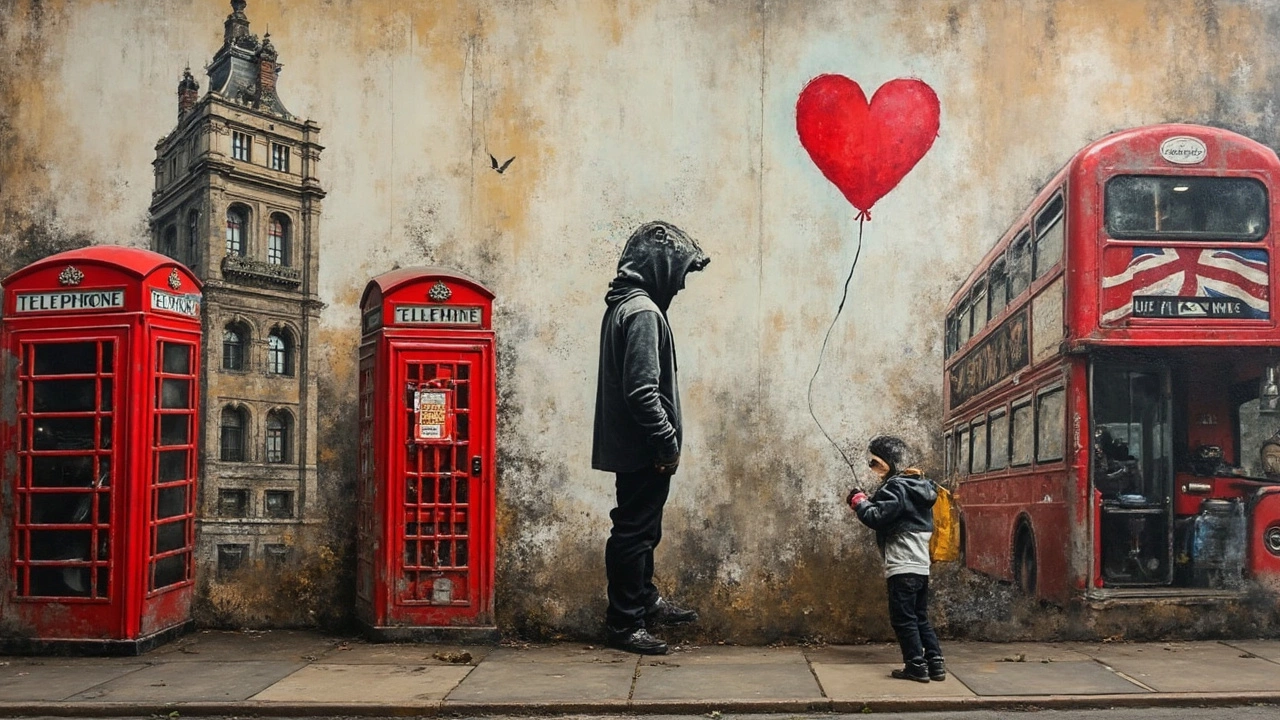
How to Spot Real Contemporary Art
So, how can you tell when you’re looking at real contemporary art and not just something random slapped on a wall or canvas? It’s not about price tags or famous galleries. Instead, there are a few clear signs and some handy tips you can use when you’re out and about or scrolling online.
- It talks about what’s happening now. Contemporary art is all about the present moment. Artists like Banksy tackle topics you’ve probably seen in the news—protests, politics, or even internet memes. If it feels relevant, that’s a good clue.
- It makes you feel or think. Top-notch pieces don’t play it safe. Whether it’s making you question authority, laugh, or get uncomfortable, real contemporary art stirs things up. You shouldn’t feel nothing.
- Look for new materials or crazy ideas. Gone are the days of just oil paint and marble. Artists use spray paint, neon lights, videos, even trash. Remember how Banksy shredded his “Girl With Balloon” after it sold? That’s the kind of inventiveness you’ll see everywhere.
- Ask yourself: is it starting a conversation? Often, you’ll see people gathering around or arguing about a piece. Look up reactions in articles or social media—debate and buzz are signs that the artwork is doing its job.
- Check for the artist’s signature or tag. With street art, the tag is key. Banksy, for example, has a distinct style and usually leaves a mark. With digital or gallery art, check for names you recognize or read up on the background—knowing who made it can tell you a lot about the intent.
If you want to sharpen your eye, try following a few big contemporary art accounts on Instagram or go to a local exhibit—even small towns have pop-up shows these days. And don’t be shy about Googling an artist or a piece that catches your eye. The story behind the art is often just as important as the work itself.
